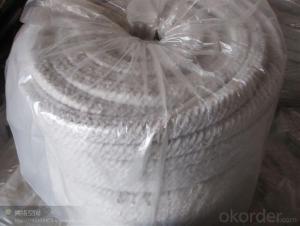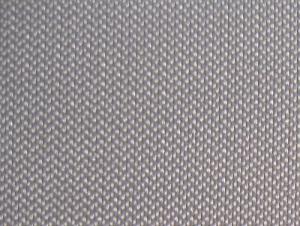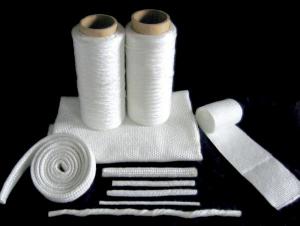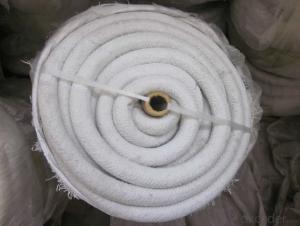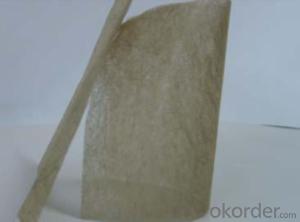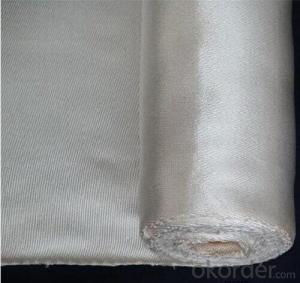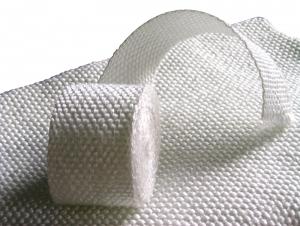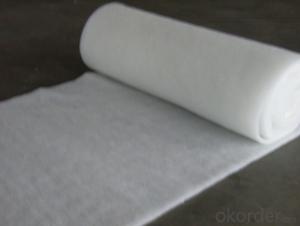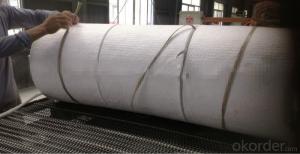Seal ceramic textile fiber rope
- Loading Port:
- Shanghai
- Payment Terms:
- TT OR LC
- Min Order Qty:
- 10 m.t.
- Supply Capability:
- 100 m.t./month
OKorder Service Pledge
OKorder Financial Service
You Might Also Like
Quick Details
| Type: | Twisted Rope | Application: | Heat Insulation | Thickness: | 4-60mm |
| Width: | 4-60mm | Length: | 30m | Grade: | HA (High Aluminum) |
| Chemical Composition: | AL2O3+SIO2 | Ultimate Strength (≥ MPa): | 0.04 | Working Temperature: | 1260 |
| Fiber Diameter: | 2-5um | Thermal Conductivity: | 0.075-0.175 w/m.k | Shrinkage (1800℉, 3h): | <=-3 |
| Place of Origin: | China (Mainland) | Brand Name: | Model Number: | ceramic textile fiber rope | |
| Color: | White | fire-resistant rope density: | 600-620kg/m3 | ceramic rope: | ceramic rope braided |
| fire resistant rope: | ceramic textile fiber rope |
Packaging & Delivery
| Packaging Detail: | ceramic textile fiber rope package: carton with inner plastic bag |
| Delivery Detail: | 15days after receiving advance payment |
Production description of ceramic textile fiber rope
Iterm | Ceramic fiber ceramic rope twisted |
Type | Ceramic fiber ceramic rope twisted |
Ceramic fiber ceramic rope twisted | |
Ceramic fiber ceramic rope twisted | |
Characteristics | ** Good thermal insulation |
** Excellent high temperature strength | |
** Good electrical insulation properties | |
** High chemical stability | |
** Low thermal conductivity | |
Typical Use | Hightemperature pipe insulation and seal,cable insulation coating, flexible expansion joint connection,coke oven opening seal |
MOQ | 30m |
FOB Price | 4-6.5 USD/KG |
Port | Qingdao |
Payment Terms | L/C, D/A, D/P, T/T |
Packing | Carton with inner plastic bags |
Delivery | Within 15 days after delivery deposit |
Certificate | ISO9001, MSDS |
Product details of ceramic textile fiber rope
Type | Ref.No. | Reinforcement | Work. Temp (°C) | Density (kg/m3) | Size (mm) |
Twisted Rope | C101TG | Glass filament | 1260 | 600-620 | 6-40 |
C101TS | Stainless steel wire | 1260 | 600-620 | 6-40 | |
Round Braided Rope | C101TG | Glass filament | 1260 | 600-620 | 6-160 |
C101TS | Stainless steel wire | 1260 | 600-620 | 6-160 |
- Q:Can glass fiber textile be used in footwear?
- Glass fiber textile has the ability to be utilized in footwear. This material, which is both durable and lightweight, can offer reinforcement and stability to different areas of footwear. It is frequently employed in the production of shoe soles, midsoles, and shanks in order to enhance their strength and support. In addition, glass fiber textile can be employed in the upper portion of the shoe to provide structure and enhance breathability. Moreover, glass fiber possesses exceptional tensile strength and moisture resistance, rendering it appropriate for use in footwear. In summary, glass fiber textile is a versatile material that can be effectively employed in the manufacturing of footwear.
- Q:Can glass fiber textiles be used in outdoor applications?
- Glass fiber textiles have the ability to be utilized in outdoor applications. These textiles are renowned for their durability and ability to withstand various environmental elements, making them suitable for outdoor use. Moisture, UV radiation, and extreme temperatures, which are frequently encountered in outdoor settings, do not pose a threat to glass fiber textiles. They are commonly employed in a variety of outdoor applications, including reinforcement in composites, insulation in buildings, and as protective covers for outdoor equipment. Furthermore, they possess exceptional dimensional stability and do not undergo stretching or shrinking when exposed to outdoor conditions. All in all, glass fiber textiles are a dependable choice for outdoor applications due to their robustness, durability, and resistance to environmental factors.
- Q:How do glass fiber textiles affect energy consumption?
- Glass fiber textiles can have a significant impact on energy consumption in various ways. Firstly, glass fiber textiles are known for their excellent insulating properties. When used in buildings, they can effectively reduce heat transfer, resulting in less energy needed for heating and cooling. This insulation capability helps maintain a comfortable temperature indoors, reducing the need for constant use of heating or air conditioning systems. Moreover, glass fiber textiles also play a crucial role in the automotive industry. When used as reinforcement in composite materials for vehicle parts, they contribute to lighter weight and increased fuel efficiency. The reduced weight of the vehicle means less energy is required to propel it, leading to decreased fuel consumption and lower greenhouse gas emissions. Additionally, glass fiber textiles are widely used in the production of wind turbine blades. These textiles provide strength and durability to the blades, allowing them to withstand harsh weather conditions and generate electricity efficiently. By enabling the production of more reliable and efficient wind turbines, glass fiber textiles contribute to the utilization of renewable energy sources, decreasing dependence on fossil fuels and reducing overall energy consumption. Overall, glass fiber textiles positively impact energy consumption by improving insulation in buildings, enhancing fuel efficiency in vehicles, and enabling the generation of renewable energy. Their utilization in various industries helps reduce energy consumption and promote sustainability.
- Q:Does glass fiber textile shrink?
- No, glass fiber textiles do not shrink as they are made from inorganic materials that are resistant to heat and do not undergo significant dimensional changes under normal conditions.
- Q:Can glass fiber textiles be used in reinforcement composites?
- Yes, glass fiber textiles can be used in reinforcement composites. Glass fiber textiles are commonly used as reinforcement materials in composite manufacturing due to their high strength, durability, and resistance to various environmental factors. They can be woven or knitted into fabrics and then combined with a matrix material, such as resin, to create composite materials with enhanced mechanical properties. These composites find applications in industries like aerospace, automotive, construction, and marine, where strength and lightweight properties are crucial.
- Q:How do glass fiber textiles affect thermal comfort?
- Glass fiber textiles can improve thermal comfort by providing insulation and reducing heat transfer. These textiles have low thermal conductivity, which helps in keeping the body warm in cold conditions and preventing heat from entering during hot weather. Additionally, they have good breathability and moisture-wicking properties, allowing sweat to evaporate and keeping the body dry, enhancing overall comfort.
- Q:Are glass fiber textiles resistant to weathering?
- Indeed, glass fiber textiles exhibit remarkable resistance to weathering. Composed mainly of inorganic substances, particularly silica, glass fibers possess exceptional resilience against the detrimental impacts of weathering. Their resistance extends to ultraviolet (UV) radiation, moisture, and fluctuations in temperature. Consequently, glass fiber textiles prove ideal for outdoor uses, particularly within the construction sector, where they are employed for roofing, insulation, and reinforcement purposes. Over time, these textiles retain their robustness and durability, enduring even the harshest weather conditions, thereby establishing themselves as a dependable option for weather-resistant and long-lasting products.
- Q:Can glass fiber textiles be used for making protective clothing?
- Yes, glass fiber textiles can be used for making protective clothing. Glass fiber textiles are made from woven strands of glass fibers that offer high strength and heat resistance. This makes them suitable for protective clothing in industries such as firefighting, welding, and chemical handling, where there is a high risk of heat, flames, or chemical exposure. Glass fiber textiles can provide excellent insulation and protection against heat, fire, and certain chemicals, making them an ideal choice for protective clothing. Additionally, glass fiber textiles are lightweight, flexible, and durable, allowing for ease of movement and extended durability in harsh environments. However, it is important to note that glass fibers can be irritating to the skin and respiratory system, so proper precautions and safety measures should be taken while working with glass fiber textiles and wearing the protective clothing made from them.
- Q:How do glass fiber textiles resist mildew?
- Glass fiber textiles resist mildew due to their inherent properties. Glass fibers are inorganic materials that do not provide a suitable environment for the growth of mold or mildew. Unlike organic materials like cotton or wool, glass fibers do not contain nutrients that support the growth of microorganisms. Additionally, glass fibers are resistant to moisture absorption, which is crucial in preventing the development of mildew. The smooth surface of glass fibers also makes it difficult for mold spores to attach and grow. Furthermore, glass fiber textiles are often treated with anti-microbial agents during the manufacturing process to enhance their resistance to mildew. These agents create a barrier that inhibits the growth of mold and mildew, ensuring the longevity and hygienic properties of the textile. Overall, the combination of inorganic composition, moisture resistance, smooth surface, and anti-microbial treatment make glass fiber textiles highly resistant to mildew.
- Q:Can glass fiber textiles be used for reinforcement in concrete pipes?
- Yes, glass fiber textiles can be used for reinforcement in concrete pipes. Glass fiber textiles, also known as fiberglass textiles, are made from fine glass fibers that are woven or knitted together to form a fabric. These textiles have high tensile strength and excellent corrosion resistance, which makes them suitable for reinforcing concrete structures, including pipes. When used in concrete pipes, glass fiber textiles can enhance their structural integrity and durability. The textiles are typically embedded within the concrete matrix, providing reinforcement to resist cracking and improve the overall strength of the pipe. The high tensile strength of the glass fibers helps to distribute the load more evenly and prevent the formation of cracks under load. Furthermore, glass fiber textiles have a high resistance to chemicals and corrosion, which is particularly important in concrete pipes that may come into contact with aggressive substances. This corrosion resistance ensures that the reinforcement remains strong and intact over time, even in harsh environments. Additionally, glass fiber textiles offer advantages over traditional steel reinforcement in concrete pipes. They are lightweight, non-magnetic, and non-conductive, which simplifies installation and reduces the risk of interference with electrical or magnetic systems. Glass fiber textiles also have a lower thermal expansion coefficient than steel, which means they are less likely to cause cracks due to temperature changes. Overall, glass fiber textiles are a viable option for reinforcing concrete pipes. Their high tensile strength, corrosion resistance, and other favorable properties make them suitable for enhancing the performance and longevity of concrete pipe systems.
1. Manufacturer Overview |
|
|---|---|
| Location | |
| Year Established | |
| Annual Output Value | |
| Main Markets | |
| Company Certifications | |
2. Manufacturer Certificates |
|
|---|---|
| a) Certification Name | |
| Range | |
| Reference | |
| Validity Period | |
3. Manufacturer Capability |
|
|---|---|
| a)Trade Capacity | |
| Nearest Port | |
| Export Percentage | |
| No.of Employees in Trade Department | |
| Language Spoken: | |
| b)Factory Information | |
| Factory Size: | |
| No. of Production Lines | |
| Contract Manufacturing | |
| Product Price Range | |
Send your message to us
Seal ceramic textile fiber rope
- Loading Port:
- Shanghai
- Payment Terms:
- TT OR LC
- Min Order Qty:
- 10 m.t.
- Supply Capability:
- 100 m.t./month
OKorder Service Pledge
OKorder Financial Service
Similar products
New products
Hot products
Related keywords
